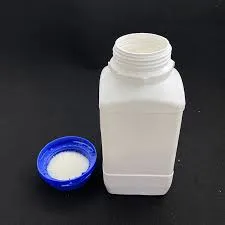The Role of Plastic Fillers and Additives in Modern Materials
Plastics have become an essential component of countless products and applications, owing to their versatile properties, lightweight nature, and cost-effectiveness. However, the evolving demands in various industries have led to an increased reliance on plastic fillers and additives. These substances play a crucial role in enhancing the performance, durability, and aesthetic qualities of plastic materials.
Understanding Plastic Fillers
Plastic fillers are inorganic or organic materials added to plastics to improve their physical properties, reduce costs, and enhance processing characteristics. Common fillers include calcium carbonate, talc, and glass fibers. Fillers can impact a plastic's strength, rigidity, thermal stability, and impact resistance. For example, the addition of glass fibers can significantly increase the tensile strength and stiffness of thermoplastic materials, making them suitable for demanding applications like automotive components and construction materials.
By incorporating fillers, manufacturers can also reduce the overall production costs of polymers. Since fillers are often less expensive than the base polymer, they allow for a more economical use of plastic while maintaining desirable physical properties. This cost-effectiveness is particularly beneficial in large-scale manufacturing processes where material savings can lead to significant economies.
The Importance of Additives
While fillers primarily focus on modifying the mechanical properties of plastics, additives serve a broader array of functions. They are chemical substances integrated into plastics to enhance specific performance attributes, alter appearance, or provide protection during processing and usage. Plastic additives can be categorized into different types, including plasticizers, stabilizers, lubricants, colorants, and flame retardants.
plastic fillers and additives

For instance, plasticizers, such as phthalates, are commonly added to polyvinyl chloride (PVC) to increase its flexibility and workability. Stabilizers, on the other hand, help protect plastics from degradation due to heat, light, or oxidation. This is particularly important for outdoor applications where UV exposure can lead to discoloration and loss of mechanical properties. Flame retardants are critical in applications requiring high safety standards, as they reduce the flammability of the material, making it less likely to ignite.
Trade-offs and Environmental Considerations
While fillers and additives enhance the performance and reduce costs of plastic products, there are trade-offs and environmental considerations. The choice of fillers can affect the recyclability of plastic materials. For example, certain additives can complicate the recycling process, leading to contamination and reducing the quality of recycled materials. Producers must carefully consider the long-term sustainability of their products.
Moreover, some plastic additives, particularly phthalates and certain flame retardants, have raised environmental and health concerns. These substances might leach into the environment or affect human health, leading to increased scrutiny from regulators and consumers alike. The plastic industry is thus challenged to develop safer alternatives and innovative additive formulations that do not compromise performance while minimizing potential risks.
Conclusion
Plastic fillers and additives are integral to modern plastic manufacturing, enhancing performance, reducing costs, and expanding application possibilities. As industries evolve and demand for sustainable solutions grows, the focus on innovative fillers and safer additives will become increasingly critical. The ongoing research and development in this field aim to not only improve plastic materials but also to ensure that they align with environmental standards and consumer safety. As we embrace a future of advanced materials, the role of fillers and additives will undoubtedly remain pivotal in shaping a sustainable and innovative plastic industry.

